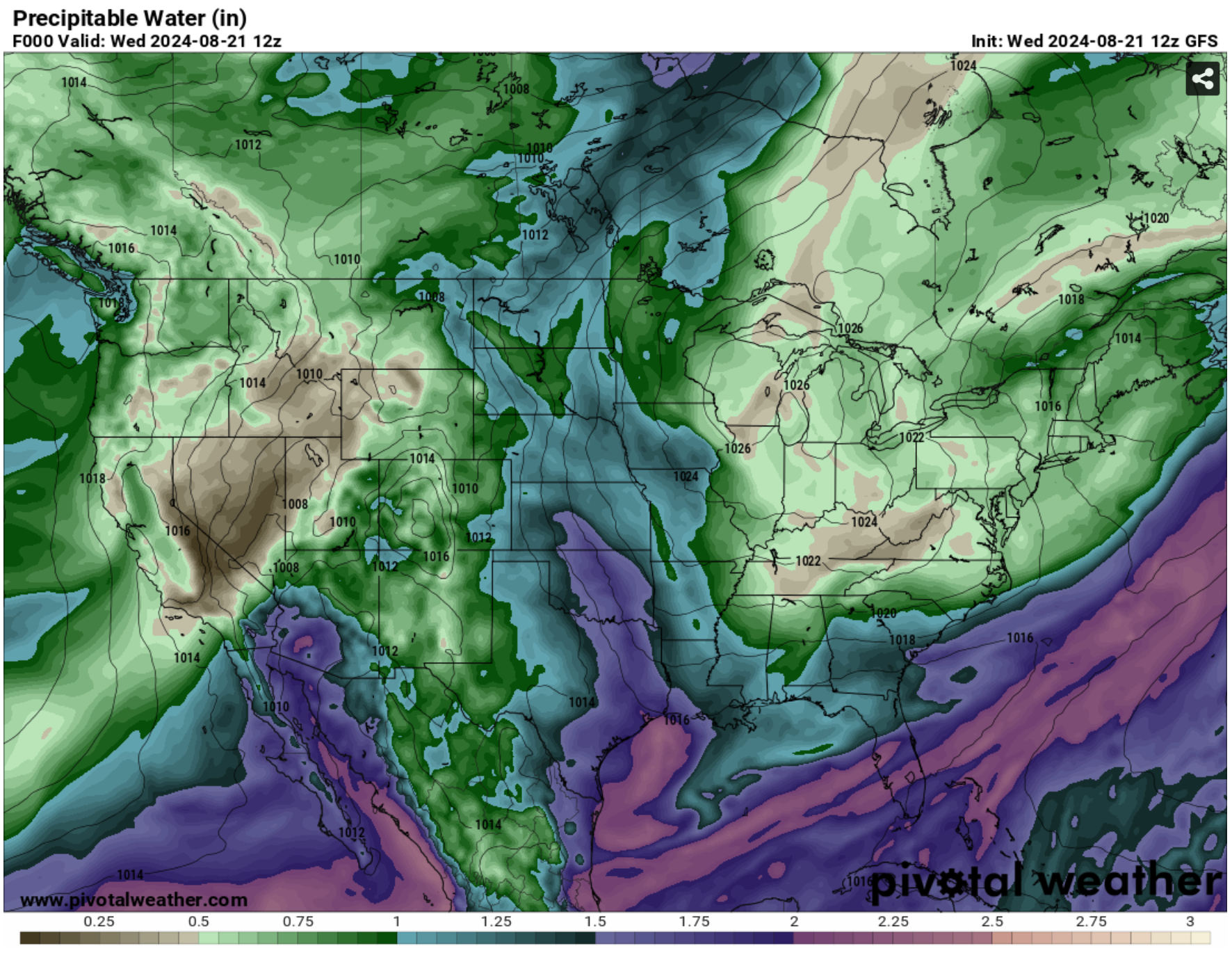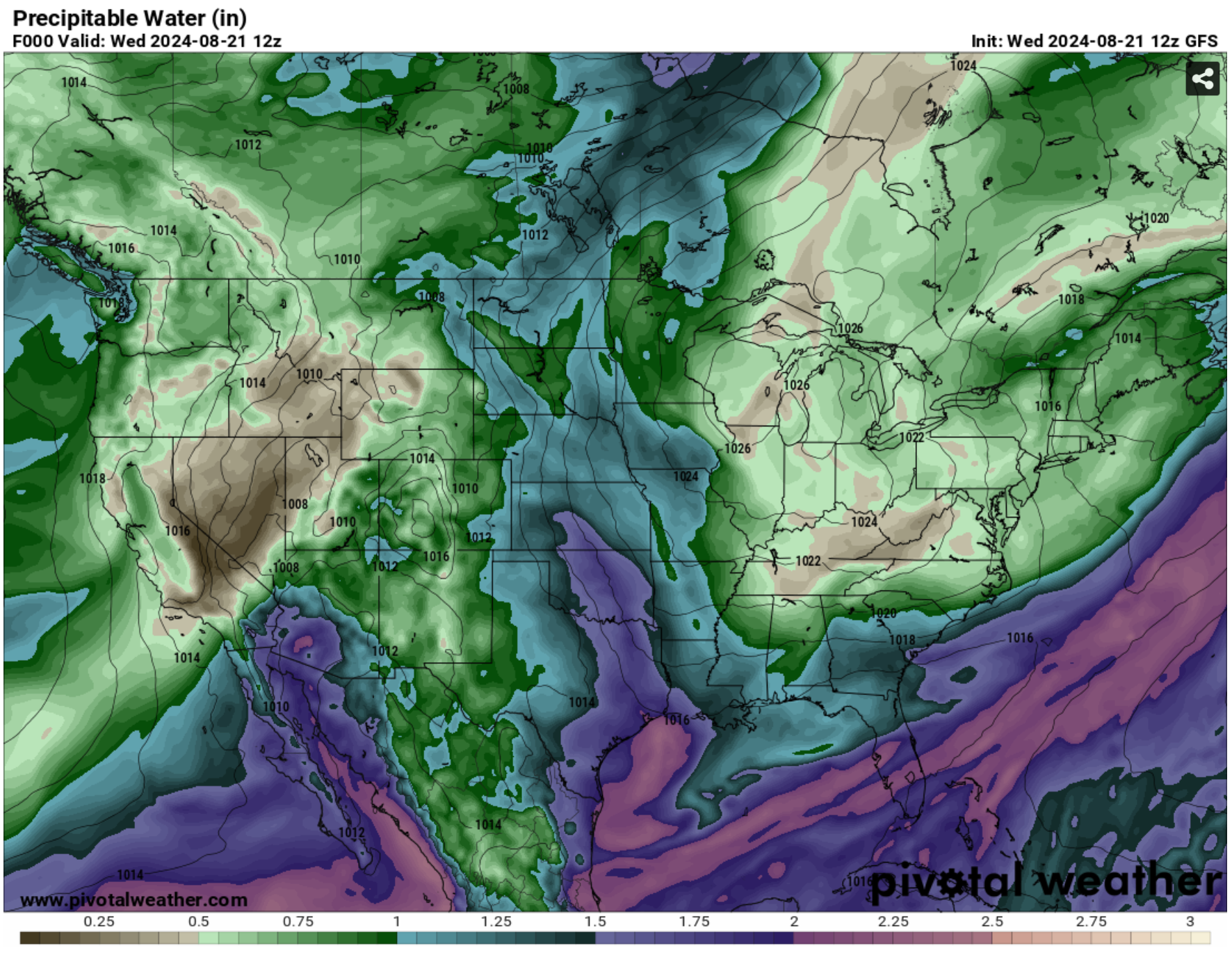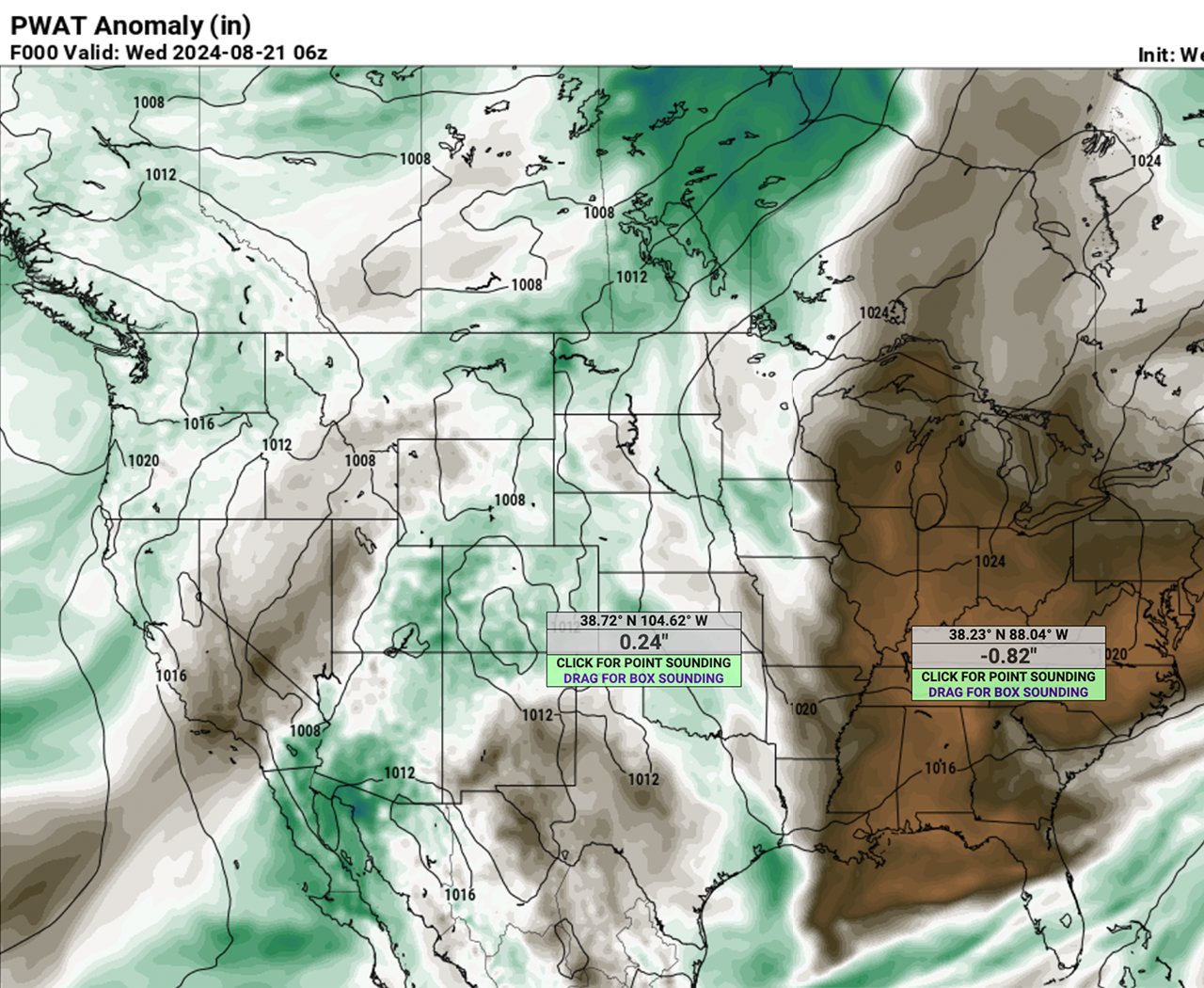Precipitable Water Revisited: The PWAT Anomaly
The deviation from the mean is helpful in predicting precipitation.

Precipitable water, or PWAT, which we discussed in an earlier article, is the amount of water you would get if all of the water vapor in a column of air from the ground to the top of the atmosphere were utterly wrung out as precipitation. This index is helpful for meteorologists and represents water that is potentially available as rain or snow.

The image above from Pivotal Weather shows precipitable water over the continental US on August 21, 2024, at 1200Z, as plotted by the Global Forecast System weather model. From North Dakota through Nebraska into Texas, the central US shows considerable moisture available for precipitation, over 1.5 inches in the dark blue areas.
Supplementing this indicator of potential precipitation is the PWAT Anomaly. This is the deviation from the climatological mean for an area or region and time of year. If the value is positive, the water vapor exceeds the mean; if negative, it lags the mean. This is important when predicting the potential for rainfall or severe thunderstorms, especially when coupled with Convective Available Potential Energy, or CAPE, Theta-e, Lifted Index, and other available parameters.

The composite image above, from Pivotal Weather, shows the PWAT anomaly values for the same date and time as the first image for two different regions of the US. The one on the left, taken over Colorado, shows available moisture 0.24 inches above the mean for that region. The PWAT anomaly over the eastern half of the US shows a deficit of -0.82 inches, a much drier airmass.
That PWAT anomalies are factored into weather forecasts is evident from the Pueblo, Colorado, Forecast Office’s forecast discussion for the period represented by the image above:
More of the concern today will be the risk of flash flooding as these storms will be sufficient rainmakers, based off of higher PWAT anomalies.
When researching your parameters to suss out upcoming weather events, don’t overlook Precipitable Water and its corresponding PWAT Anomaly. It can provide significant insights into the potential for severe weather and flash flooding. Consider it another tool in your toolbox.
